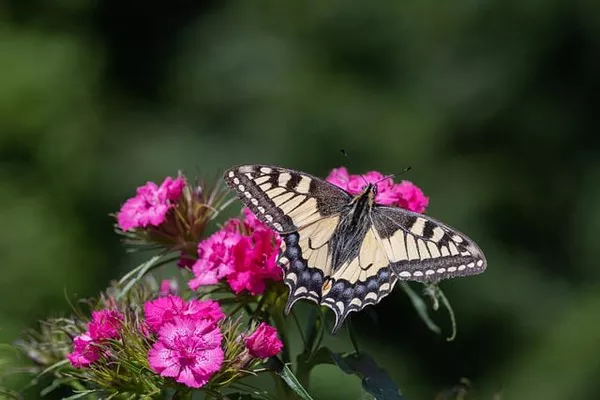The enchanting sight of fluttering monarch butterflies is a joy for any nature lover. These iconic insects play a crucial role in pollination and are essential for maintaining the ecological balance of our environment. If you’re eager to welcome these winged wonders into your garden, the key lies in planting the right flowers. In this article, we will explore a variety of flowers that not only add beauty to your landscape but also serve as magnets for monarch butterflies.
Monarch Butterflies and Their Habitat
Before delving into specific flower choices, it’s essential to understand the monarch butterfly’s life cycle and habitat preferences. Monarchs undergo a remarkable journey, migrating thousands of miles between North America and Mexico. During their journey, they rely on nectar-rich flowers for sustenance and lay their eggs exclusively on milkweed plants.
Milkweed: The Monarch’s Lifeline
Milkweed (Asclepias) is the cornerstone of any monarch-friendly garden. Monarch butterflies lay their eggs exclusively on milkweed plants, and the caterpillars feed on the leaves. There are various species of milkweed, each with unique characteristics, making it an excellent choice for diverse garden landscapes.
Common milkweed (Asclepias syriaca) and swamp milkweed (Asclepias incarnata) are particularly popular. Common milkweed features large, spherical clusters of pink flowers, while swamp milkweed boasts attractive pink to mauve blooms. Including a variety of milkweed species ensures a continuous supply of food for monarch caterpillars throughout the growing season.
Nectar-Rich Flowers for Adult Monarchs
While milkweed is vital for the monarch caterpillar, adult butterflies require nectar-rich flowers to fuel their flights and sustain their energy. Planting a diverse range of flowers with varying bloom times ensures a continuous nectar supply, attracting monarchs throughout the season.
A. Butterfly Bush (Buddleia)
Known as the “butterfly bush” for a reason, Buddleia is a popular choice for attracting monarchs and various other butterfly species. Its cone-shaped clusters of fragrant flowers come in various colors, such as purple, pink, and white. With a long blooming season, butterfly bushes provide a reliable nectar source.
B. Coneflowers (Echinacea)
Coneflowers, with their distinct cone-shaped centers and vibrant petals, are not only visually appealing but also irresistible to monarchs. These hardy perennials come in a range of colors, including purple, pink, and white. Their extended bloom period, from late spring to early fall, ensures a constant supply of nectar.
C. Lantana
Lantana is a heat-tolerant and drought-resistant plant that monarch butterflies find particularly attractive. Its clusters of small, brightly colored flowers create a feast of nectar, making it a valuable addition to butterfly gardens. Lantana comes in various color combinations, including orange, yellow, and pink.
D. Zinnias
Zinnias are a favorite among gardeners for their vibrant colors and easy care. Monarchs are drawn to the rich nectar supply provided by zinnia flowers. With their long-lasting blooms, zinnias make a colorful addition to any garden while supporting pollinators.
Creating a Butterfly-Friendly Environment
Apart from specific flower choices, creating a conducive environment for monarch butterflies involves certain gardening practices:
A. Avoiding Pesticides: Monarch butterflies are highly sensitive to pesticides. Opt for natural pest control methods and avoid using harmful chemicals that could harm both caterpillars and adult butterflies.
B. Providing Sun and Shelter: Monarchs thrive in sunny locations, so ensure that your garden receives ample sunlight. Additionally, consider incorporating elements like rocks or branches that offer shelter from strong winds.
C. Water Sources: Butterflies, like all creatures, need water. Providing shallow dishes with water and placing damp sand or soil nearby allows butterflies to access essential minerals.
Conclusion
By carefully selecting a variety of flowers that cater to both the needs of monarch caterpillars and adult butterflies, you can transform your garden into a haven for these magnificent creatures. Planting milkweed ensures the survival of the monarch’s life cycle, while nectar-rich flowers provide sustenance for the adult butterflies. Embracing butterfly-friendly gardening practices further enhances the chances of attracting and supporting these beautiful insects. As you embark on this journey, not only will you be creating a picturesque garden, but you’ll also be contributing to the conservation of the vital role monarch butterflies play in our ecosystem.


